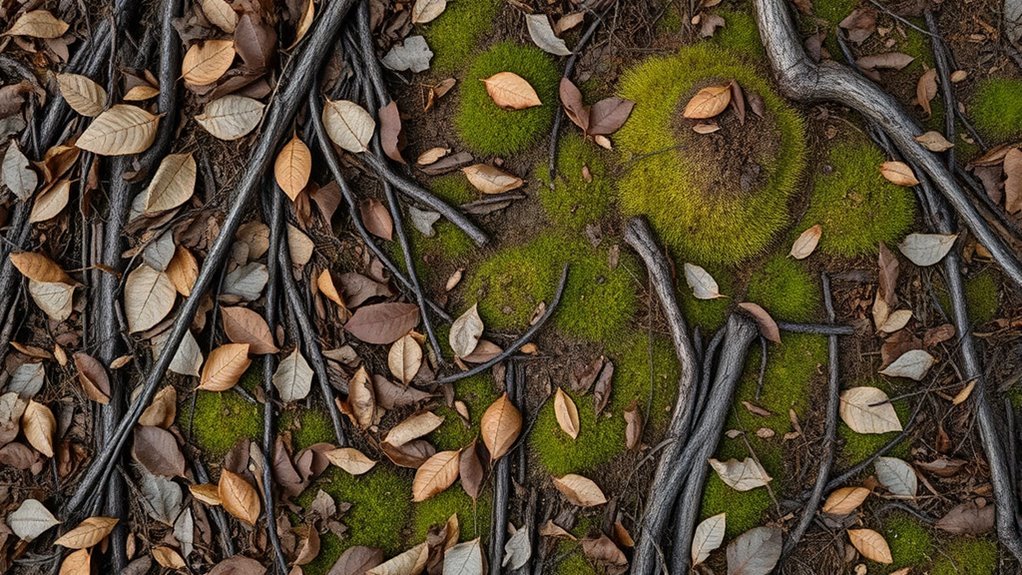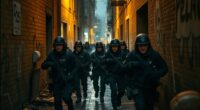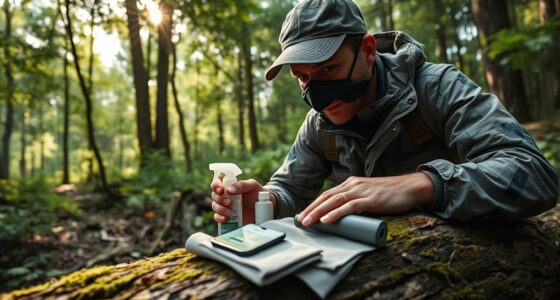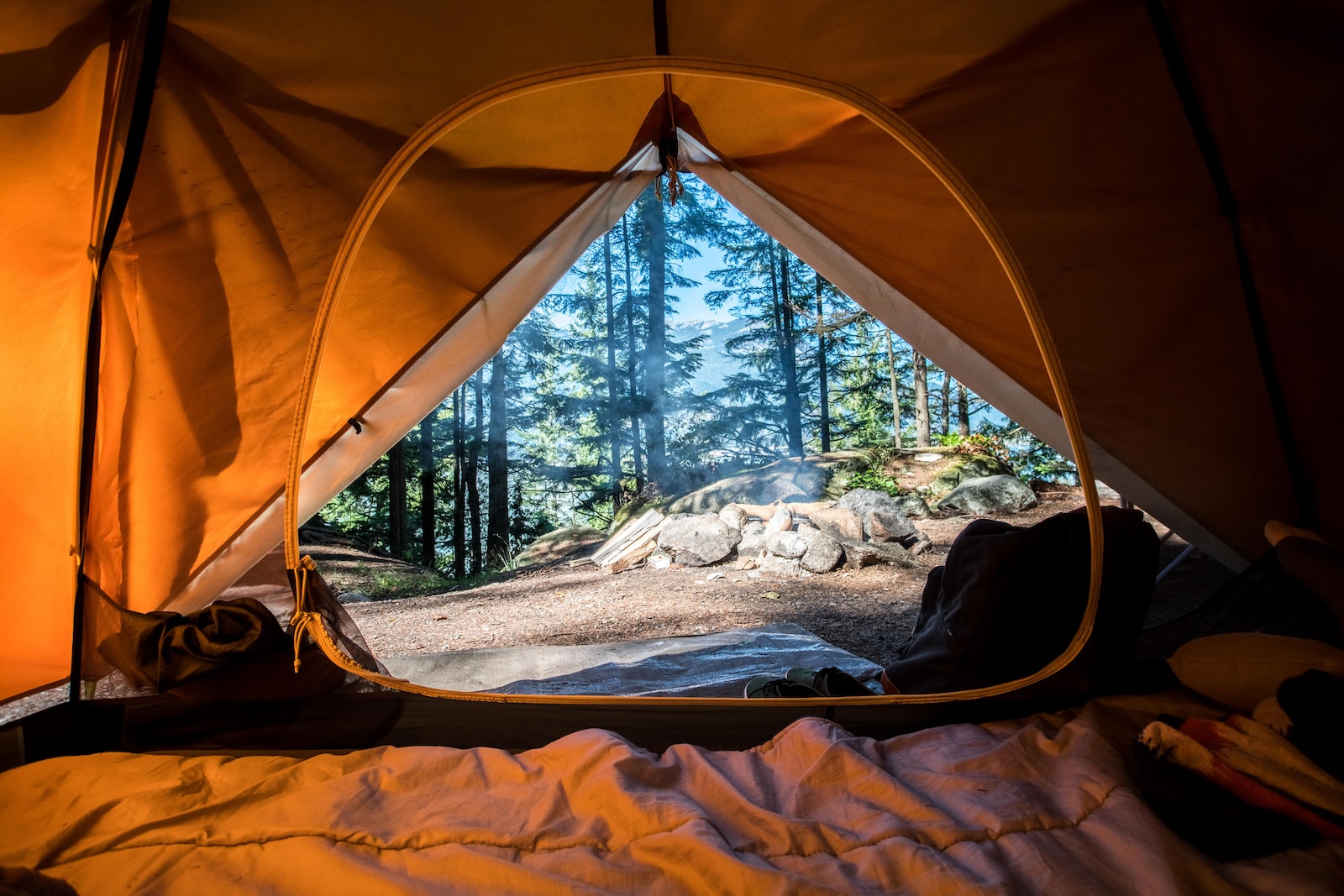To choose terrain that muffles movement, focus on areas with dense vegetation, mud, or loose sand. Vegetation like bushes and tall grass offers concealment but slows your units, while muddy and sandy ground hampers speed and increases noise, helping you hide or set ambushes. Using these terrains strategically can give you control over the battlefield, making enemy advances more difficult. Keep exploring how terrain textures can be your tactical advantage to master the field.
Key Takeaways
- Prioritize vegetation like bushes and forests for concealment and ambush opportunities, despite slower movement.
- Use muddy or sandy terrain to slow enemy units, creating chokepoints and strategic delays.
- Balance between concealment and mobility; choose terrain that offers cover without excessively hindering movement.
- Leverage terrain textures to manipulate unit positioning, setting traps or controlling engagement zones.
- Recognize terrain differences to anticipate enemy tactics and optimize your own movement and concealment strategies.
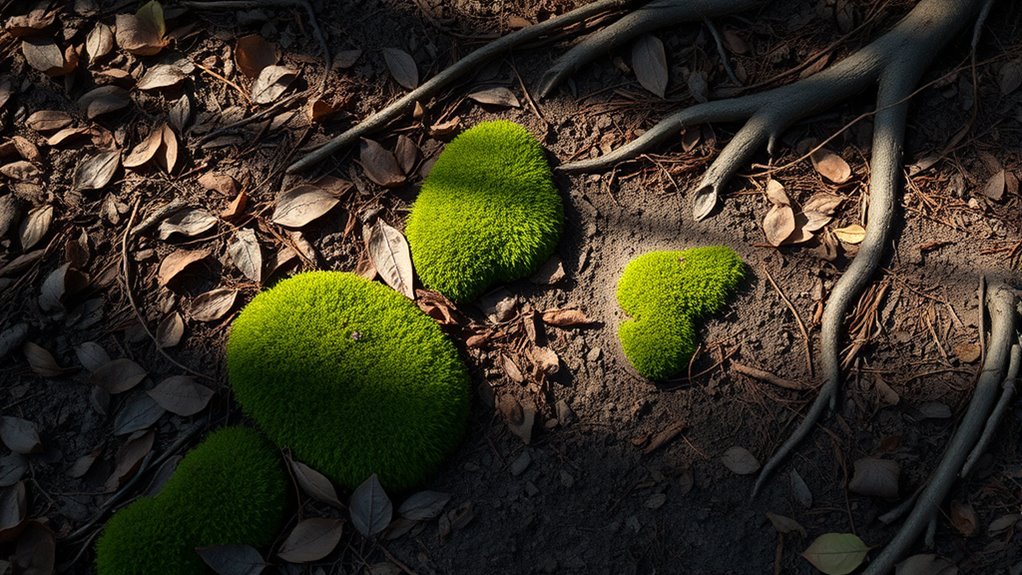
Have you ever wondered how terrain textures can influence your gameplay or strategic decisions? When you choose the right ground, you can gain notable advantages by muffling movement and gaining better control over your environment. Terrain textures like covering vegetation, mud, and sand are more than just visual elements; they directly impact how your units move, how stealthy you can be, and how quickly you can respond to threats. Recognizing these subtle differences can turn the tide of a match or mission.
Covering vegetation, for example, provides natural concealment. Thick bushes, tall grass, or dense forests can hide your units from enemy sight, allowing for stealthy approaches or ambushes. Moving through such terrain slows you down, but the trade-off is often worth it if you need to stay hidden. Vegetation can also absorb sound, muffling footsteps and making noise less likely to give away your position. When planning your movements, consider how dense vegetation can be used to your advantage, forcing opponents to rely on long-range detection methods or risking detection themselves.
Mud and sand, on the other hand, substantially affect movement speed and noise levels. Muddy terrain, especially after rain, tends to be soft and sticky, making it difficult for vehicles or foot soldiers to traverse quickly. Moving through mud consumes more stamina and can cause units to become bogged down, leaving them vulnerable or delaying their response times. Sand, particularly loose or deep sand, offers a similar challenge; it reduces mobility and can create noise that alerts enemies. However, sand can also be a strategic asset—if you know how to use it to slow down or mislead opponents, you can set traps or create choke points that favor your tactics.
Understanding how these terrain textures influence muffling movement is vital for effective positioning and timing. For instance, crossing through vegetation might slow you down but keep you hidden, while trudging through mud or sand might hinder your speed but help you avoid detection if executed carefully. Each terrain type demands a different approach and offers unique tactical opportunities. When you’re planning an advance or retreat, weigh the benefits of concealment versus mobility. Sometimes, sacrificing speed for cover can keep your units alive longer, while other times, quick movement over less conspicuous terrain might be necessary to outflank enemies.
Additionally, awareness of ground textures can help you anticipate enemy movements and set up ambushes more effectively. In essence, mastering terrain textures like covering vegetation, mud, and sand allows you to shape the battlefield to your advantage. By choosing ground that muffles movement and provides concealment or obstacles, you can control engagement distances, surprise opponents, and minimize your own vulnerabilities. Effective terrain texture tactics turn ordinary ground into a strategic weapon, giving you the upper hand in both offensive and defensive maneuvers.
Frequently Asked Questions
How Does Terrain Texture Impact Stealth Strategies?
Terrain texture directly impacts your stealth strategies by influencing sound absorption and camouflage integration. When you choose textured ground like leaves, grass, or soft soil, it muffles your movement’s noise, making you harder to detect. These surfaces help you blend seamlessly into your environment, enhancing camouflage. By selecting terrain with sound-absorbing qualities, you increase your chances of staying hidden and maintaining an advantage in stealth operations.
What Are the Best Terrains for Sound Dampening?
You should look for terrains with natural soundproof barriers like dense forests or thick underbrush, which dampen noise effectively. Areas with soft ground, such as mossy or leaf-covered surfaces, provide better acoustic insulation, reducing sound transmission. Avoid hard surfaces like rocky or paved areas, as they reflect sound. These terrains help muffle movement and keep your stealth strategies intact by minimizing noise detection.
Can Terrain Texture Influence Combat Engagement Distances?
Yes, terrain texture can influence combat engagement distances. Soundproof surfaces and acoustic absorption properties of certain terrains, like dense foliage or soft ground, reduce noise and conceal your movements. This allows you to engage enemies from farther away without alerting them. By choosing terrain with these sound-dampening qualities, you can extend your effective range and gain a tactical advantage through quieter, more discreet operations.
How to Identify Terrain That Muffles Movement Effectively?
To identify terrain that muffles movement effectively, look for surfaces with high sound absorption and surface roughness. These features reduce noise and slow down movement, providing a tactical advantage. Test the terrain by moving quietly and listening for echoes or sounds that indicate sound dampening. Areas with dense vegetation, loose soil, or rocky ground typically absorb sound better and hinder movement, making them ideal for stealth and strategic positioning.
Are There Technological Tools to Analyze Terrain Textures?
Tech tools transform terrain texture analysis, turning tough terrain into tactical territory. Satellite imaging captures exhaustive contours, while terrain analysis software sifts through surfaces, showcasing muffling potential. You can utilize these tools to precisely pinpoint ground that muffles movement, making your strategies smarter and more selective. By leveraging technology, you gain greater control, minimizing movement noise and maximizing stealth, all while making informed decisions based on detailed, data-driven terrain insights.
Conclusion
Ultimately, selecting the right terrain texture isn’t just about concealment; it’s your secret weapon, your hidden armor. By muffling movement and blending seamlessly with your surroundings, you turn the battlefield into your sanctuary. Remember, the ground beneath your feet is more than just dirt—it’s your silent ally. Embrace it, master it, and let the terrain whisper your tactics before you even make your move. Because in the end, silence isn’t just golden—it’s unstoppable.

